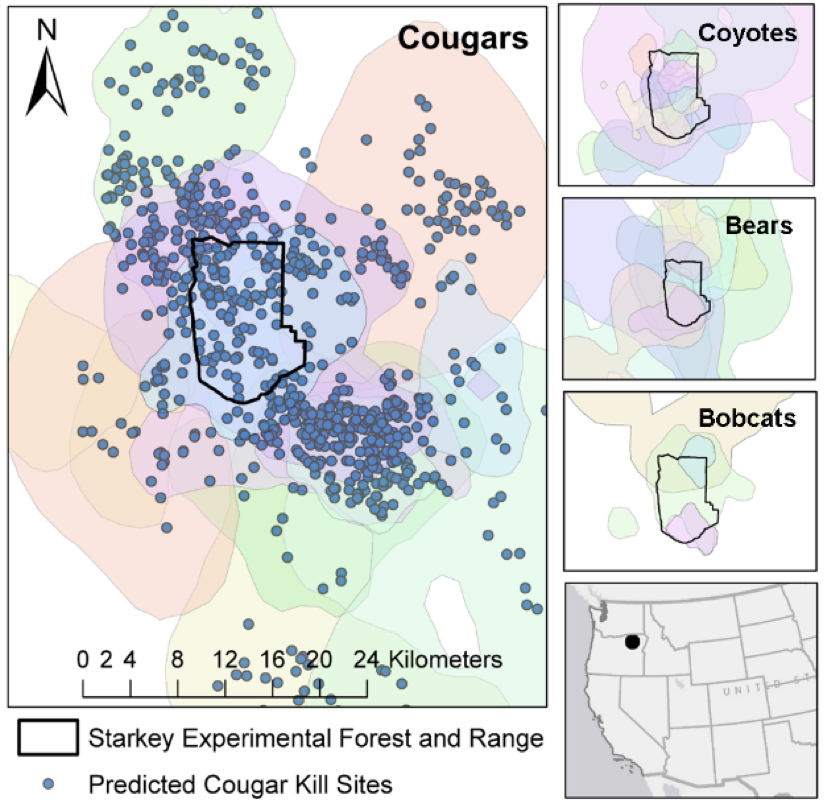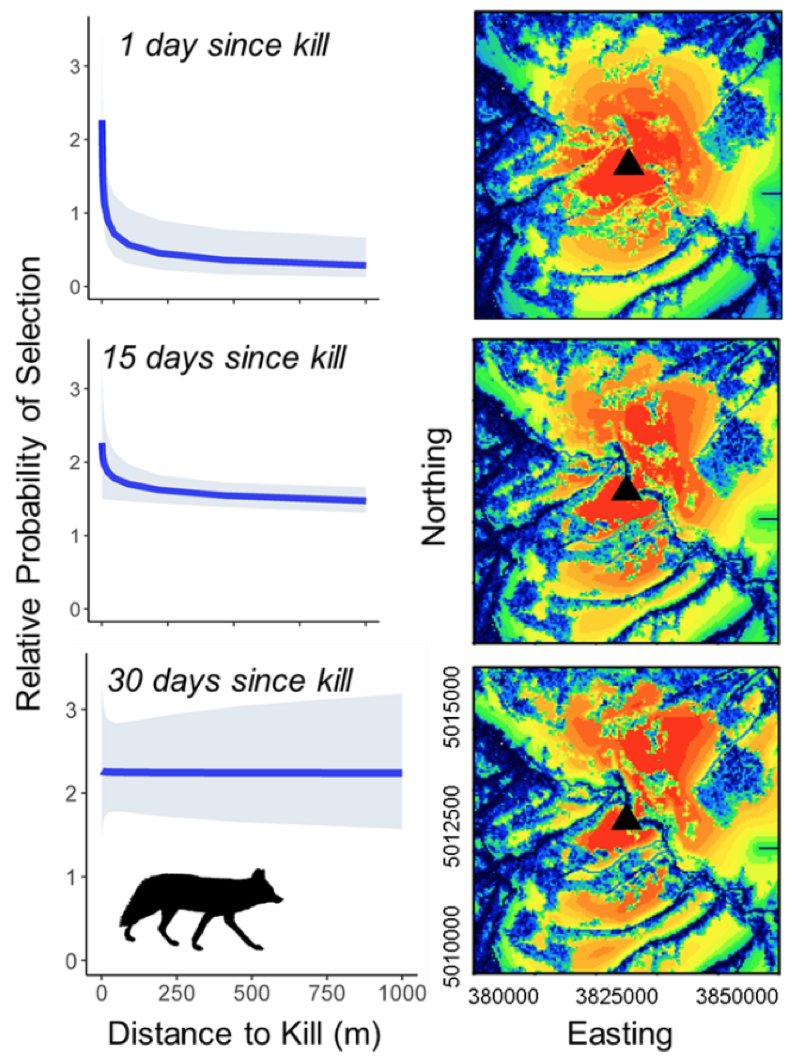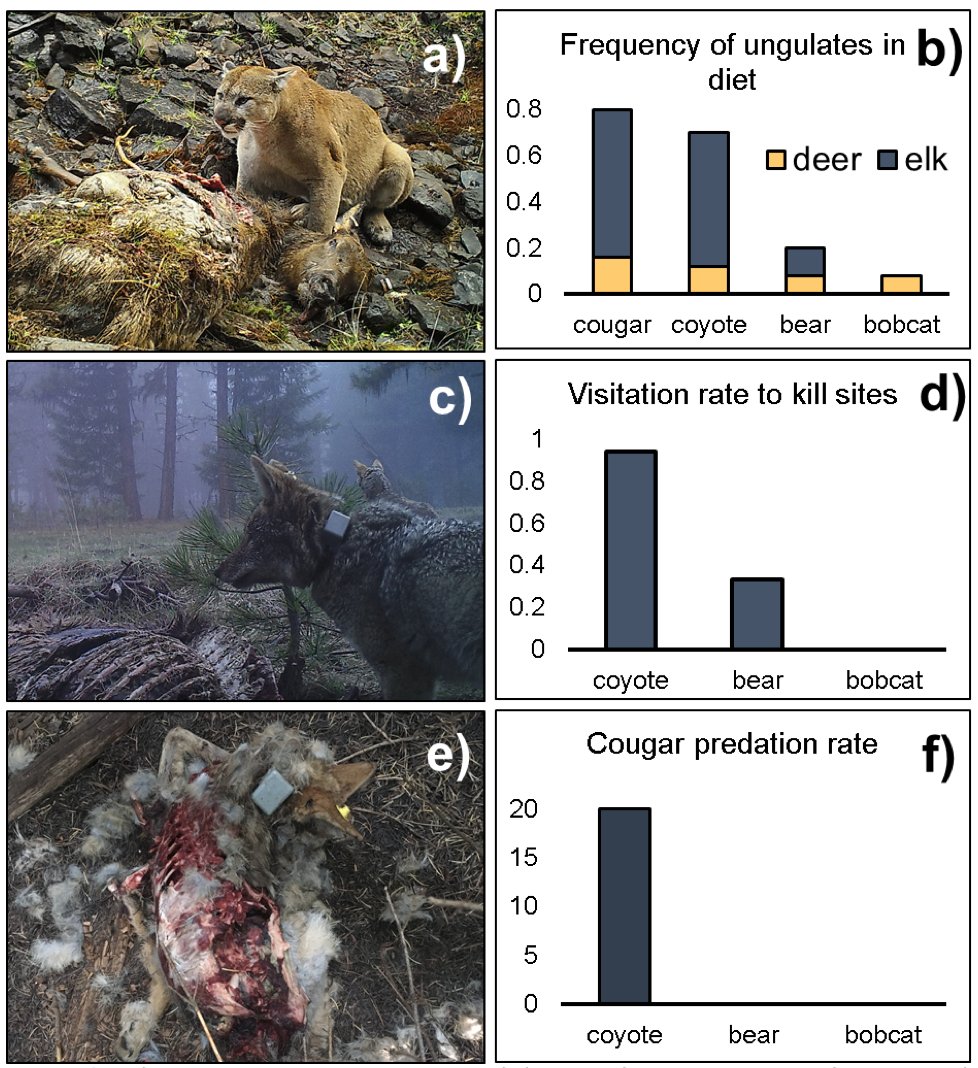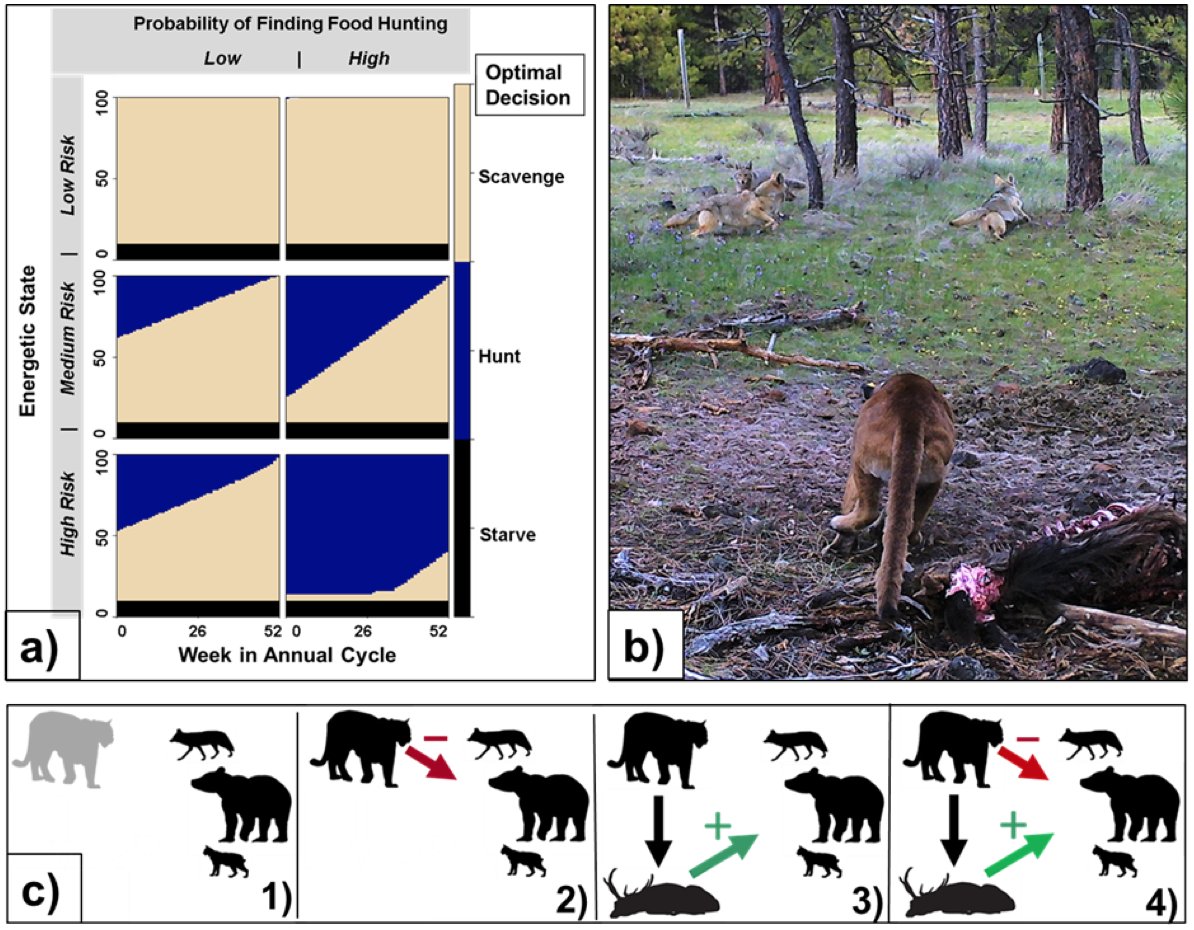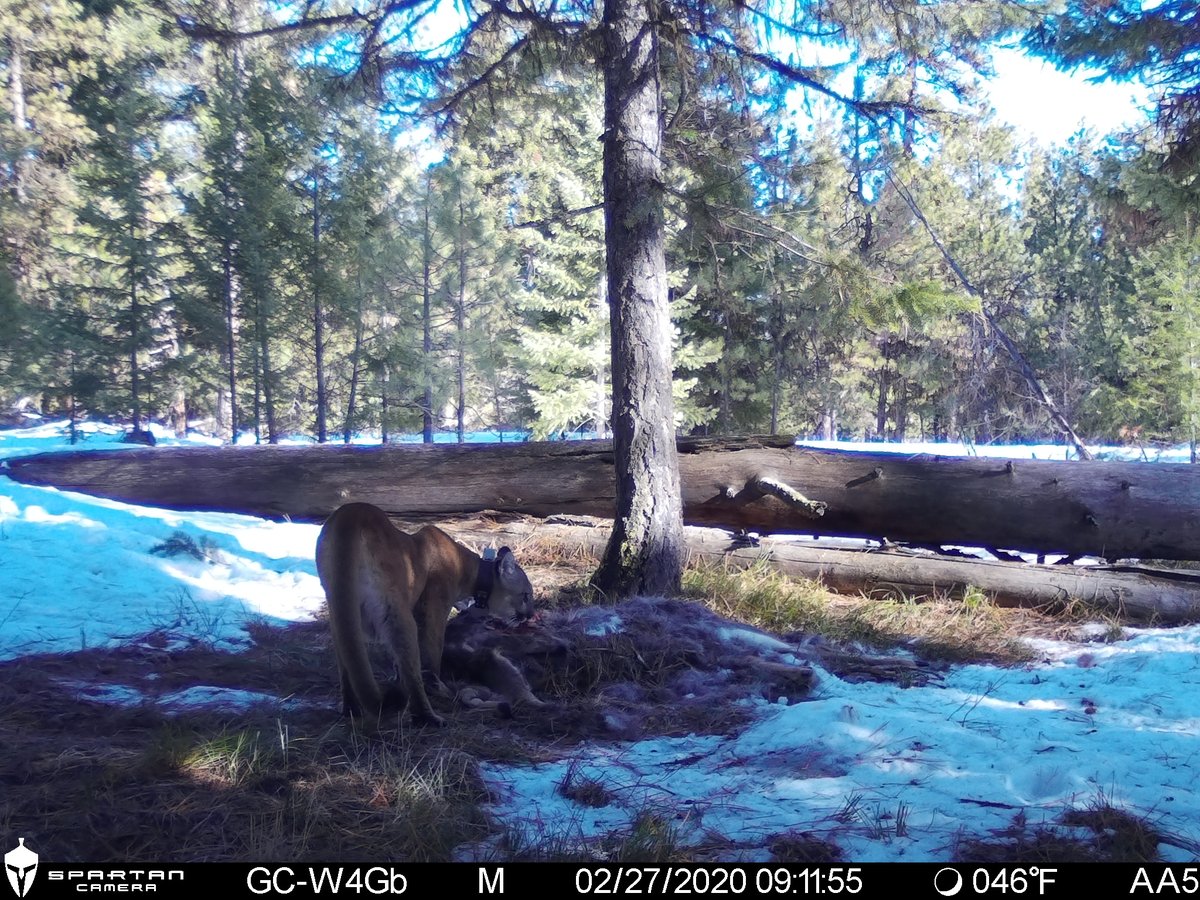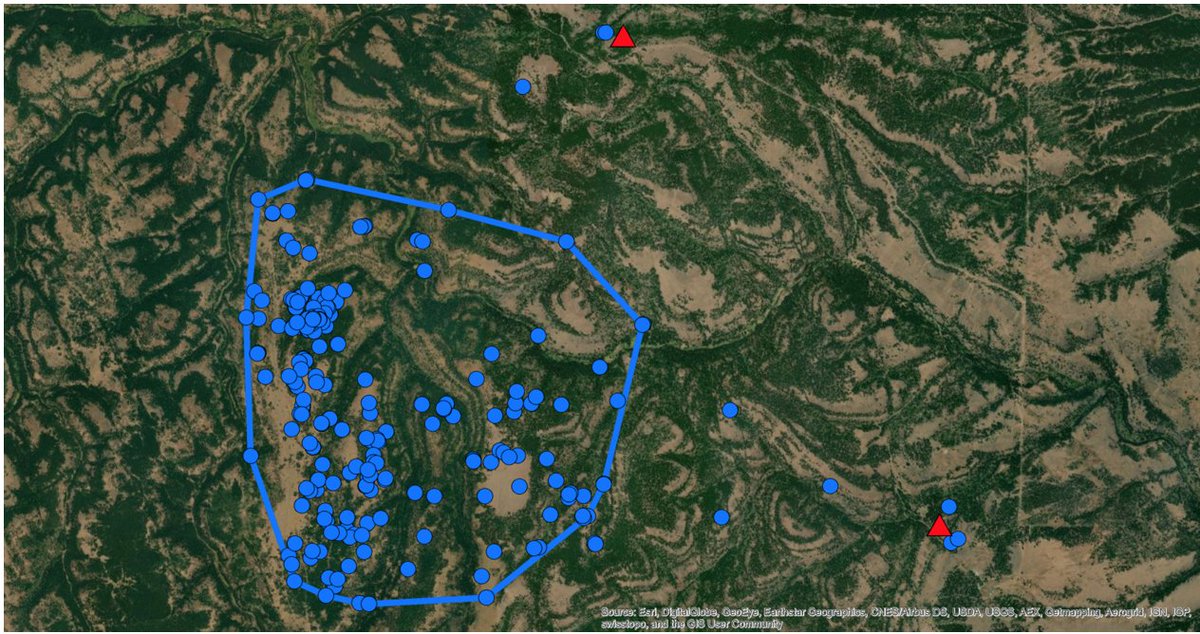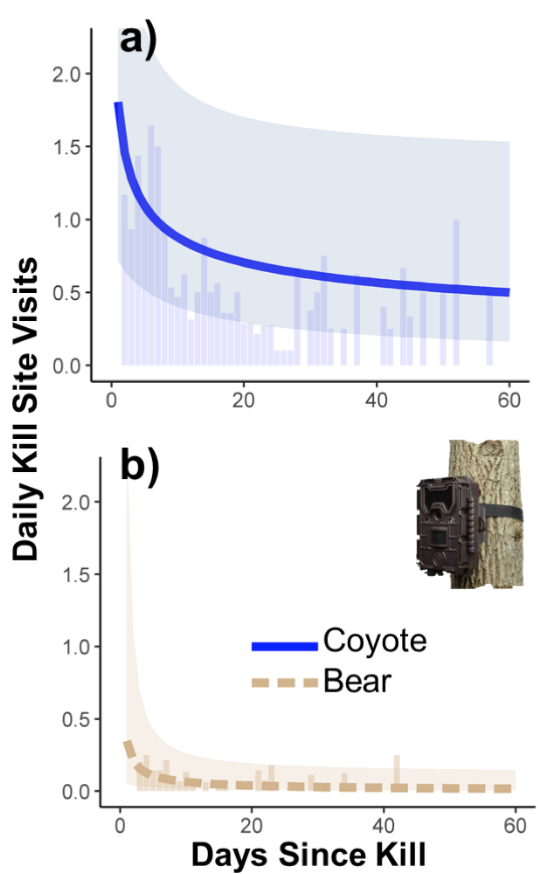How do bears, bobcats, and coyotes interact with cougars and their kills?
Really excited for new paper from Joel Ruprecht. 51 GPS collared animals from 4 species, 972 DNA metabarcoded scats, 128 cougar kill investigations, and videos from carcasses
Cougar chasing coyote at kill
Really excited for new paper from Joel Ruprecht. 51 GPS collared animals from 4 species, 972 DNA metabarcoded scats, 128 cougar kill investigations, and videos from carcasses
Cougar chasing coyote at kill
A common idea in large carnivore ecology is that large predators often suppress smaller predators, but they also supply them with carrion. How to think about the relative strength of suppression (killing) and facilitation (provisioning)? How are different species affected?
SOUND!
SOUND!
Here are the home ranges of collared individuals around or field site at Starkey Experimental Forest in OR. Blue dots are cougar kill sites identified over the course of the study. That is not a trivial amount of carrion! Mostly elk followed by deer at killsites. Low deer density
Here are a few animals from the 4 species moving around the landscape from early days of our study. These species may avoid or be attracted to cougars and/or their kills. We used integrated step-selection functions (Thanks @wild_move_eco and @FiebergJohn @signer_j ) to test this
Coyotes and bears both avoided cougars. Coyotes were very strongly attracted to cougar kills and avoided canopy cover. The attraction lasted for ~30days. The cold-warm colormap represents avoidance-attraction. Strong attraction to kill placed in a grassland. Dark areas are forest
In contrast, bobcats didn't respond behaviorally to cougars or kills. DNA metabarcoding found that coyote diets were VERY similar to cougar diets. The large proportion of elk suggests that MOST of their food is from scavenging kills. They visited almost every video-monitored kill
Coyotes were ~7% of cougar kills in this system. We even had a collared cougar kill a collared coyote. Because we previously estimated coyote and cougar density and now quantified kill rate, we estimated 23% (CI:8-55) of coyotes killed by cougars annually https://twitter.com/taaltree/status/1244533046079963136
So everything about being a coyote is influenced by cougars. They are getting the majority of food from cougars, they avoid them in space, but are very strongly attracted to their kills, and they very often diet by them. They are playing a complex game of risk and reward.
We tried to illustrate this with theory (Thanks @MarcMangel1). Scavenging comes with risk, and whether it's optimal to scavenge depends on risk of scavenging, profitability of hunting, and energy reserves. Bobcats don't scavenge here, but might elsewhere with<profit from hunting
As an example of how this interaction sometimes works. Here is a coyote scavenging at a carcass. The coyote runs off after hearing a vocalization just 1 minute before a cougar arrives. Was it was another coyote alarm calling? @CarnivoreLab or others, can you tell what that is?
Here is the cougar that arrives. Typically coyotes don't stick around, but somehow we got these audacious coyotes at one carcass (the first few videos) that pestered a cougar and eventually got access to the carcass. Surely group size influences this interaction.
Here is when the cougar leaves the carcass and the coyotes can return.
Coyotes have very well-defined home range boundaries. We wondered whether they would leave their ranges for a kill, and how far they might travel. This could tell us something about how far they detect kills
Coyotes have very well-defined home range boundaries. We wondered whether they would leave their ranges for a kill, and how far they might travel. This could tell us something about how far they detect kills
It does happen. Here is the well-defined home range of a resident coyote that made two directed forays from it's home range for two distinct cougar kill sites. The movements were 2.2 km and 3.6 km from the nearest perimeter home range.
Preprint including supplemental material and videos here. Please review/critique here or if asked by journal
Joel spent ~3 years in the field and then a herculean analytical effort. @ceeriksson7 led all metabarcoding. Many others from Oregon DFW & USFS https://www.biorxiv.org/content/10.1101/2021.01.27.428481v1
Joel spent ~3 years in the field and then a herculean analytical effort. @ceeriksson7 led all metabarcoding. Many others from Oregon DFW & USFS https://www.biorxiv.org/content/10.1101/2021.01.27.428481v1

 Read on Twitter
Read on Twitter